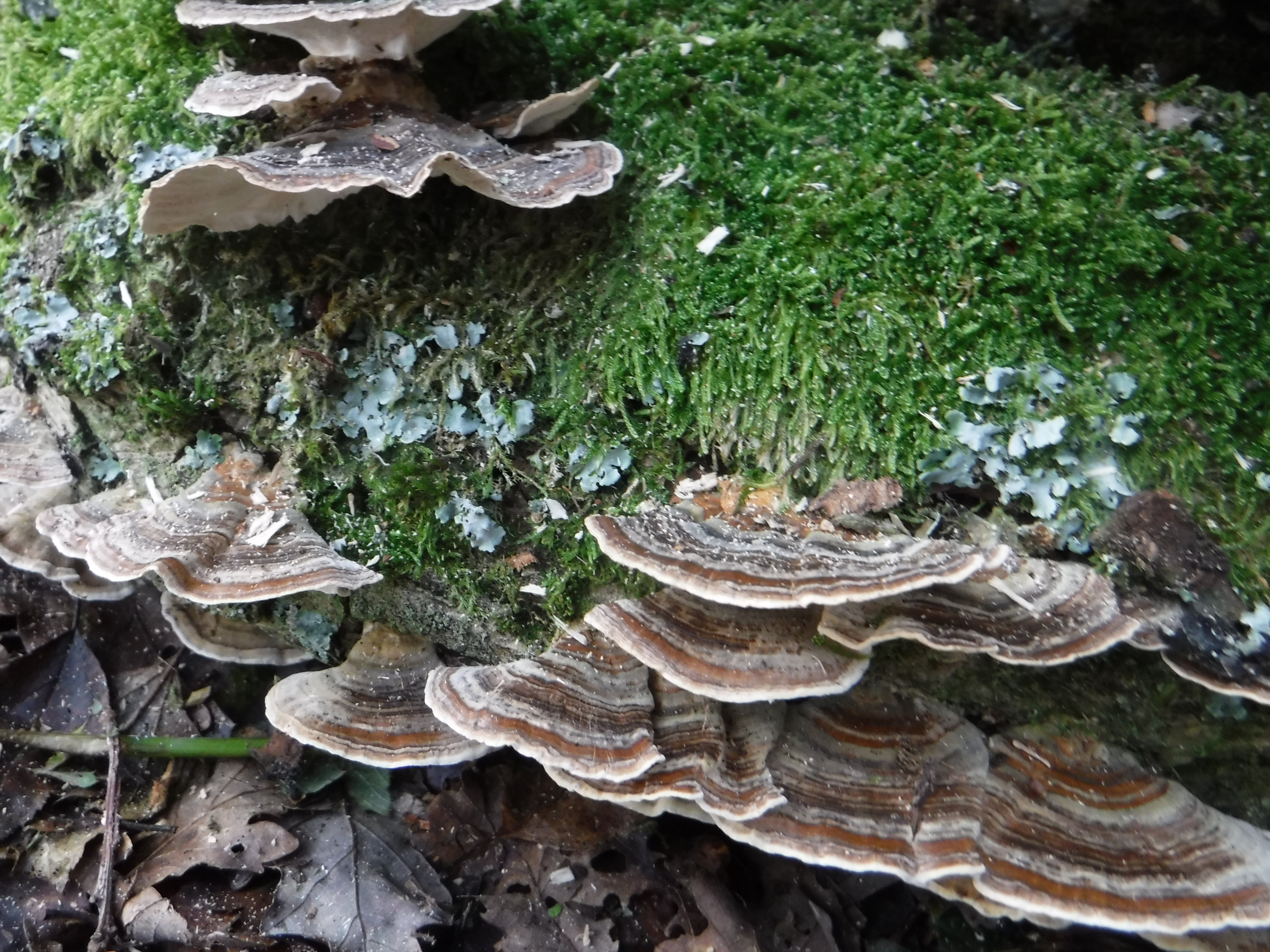
Total monthly rainfall: 74.5 millimetres. Maximum daily rainfall: 14.5mm (15th) and 14mm (27th Jan). During the month, measurable rain fell on 18 days, and there was 100% cloud-cover on 20 days. Maximum temperature on the warmest day was 12°C on the 8th and 9th. Maximum temperature on the coldest day was 5°C on the 25th January. There was overnight frost on the 1st, and 18th to 21st, with woodland ponds being lightly frozen on January 21st.
The weather was very windy between the 13th and 17th, with many woodland saplings and branches down, and we had a calm spell from January 21st to the 24th. The ground remained very soggy for the entire month.
Wildflowers have tended to bloom very early again this year. We began the year with white dead-nettle and dandelion in bloom on the 1st – carrying on from 31st December 2019. Common daisy then flowered on the 6th, followed by red dead-nettle on the 10th and snowdrop on the 12th. Last to flower this month were speedwell on the 13th and wild primrose on the south-facing side of our roadside verge on the 24th. While not yet flowering, bluebell leaves are already 10cms high.
-
 Frozen woodland pond
Frozen woodland pond
Frozen woodland pond
Frozen woodland pond
-
 Hibernating ladybirds between double-fence posts
Hibernating ladybirds between double-fence posts
Hibernating ladybirds between double-fence posts
Hibernating ladybirds between double-fence posts
-
 Spring usher moth on fence post
Spring usher moth on fence post
Spring usher moth on fence post
Spring usher moth on fence post
-
 Turkeytail fungus and moss on oak cordwood
Turkeytail fungus and moss on oak cordwood
Turkeytail fungus and moss on oak cordwood
Turkeytail fungus and moss on oak cordwood
https://www.kentfieldclub.org.uk/news/little-barton-farm-wildlife-notes/nature-notes-january-2020#sigProId44243dd281
Most insects are hibernating at this time of year, and are therefore often difficult to find. One exception is the species of moths associated with winter, such as the aptly named winter moth which provided our first moth sighting of the year on January 3rd, on the lighted front window of our front porch. We have continued to see this throughout the month in substantial numbers, often struggling on woodland ponds. Another plentiful moth was the spring usher, first photographed between double fence-posts on the 5th, and seen on different fence-posts 5 times since.
We know bumblebees do hibernate, but we were surprised to see a queen buff-tailed bumblebee flying alongside a field hedge on a sunny January 12th - the earliest we have so far recorded the species, and not seen again since then.
Ladybirds also hibernate, and last month we reported on what we have now decided are 16-spot ladybirds on 12 woodland fence-posts. By 24th January they had re-arranged themselves somehow onto 6 double-fence posts further down the wood, (each second fence post added to strengthen the fence against rubbing livestock). By this stage, the ladybirds had grown in number to roughly 600, with about 400 of them huddled together between the last of the double- posts. We measured a single vertical line of ladybirds over one inch (2.5cm), and counted 24 ladybirds, which meant that each ladybird was about 2mm long – making them half-grown. They remained virtually unchanged until the end of the month, but when hibernation is over they will have to eat large numbers of aphids to complete their growth.
One of the first things I (Terry) was taught in secondary school was how to work out direction without actually having a compass. These included sunrise (east), sunset (west), north star (at night), the church (east window, west tower), and in the countryside moss on the north side of trees. In our woodland it is now almost impossible to use this last method, as moss is now growing all round the trees, and over large parts of the woodland floor, encouraged by the mild wet winters we now seem to be getting. The same conditions encourage fungi, and on January 6th we had three of the lowest branches removed from a large oak to maintain the balanced growth of the tree. The pile of cordwood stacked beneath contained a fantastic display of moss and turkeytail fungus. However, another oak, the red oak pictured last month, seems to have as many leaves as it had then.
Other first-sightings for the year include rabbit and grey squirrel on January 1st; hazel catkins releasing pollen (8th); and active mole-hills in the driest part of our permanent pasture (19th).

